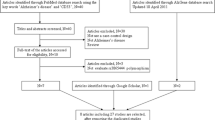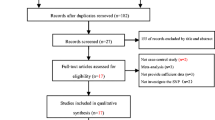Abstract
Current studies have evaluated the association between CD14-260 (also known as -159) C/T polymorphism and Alzheimer’s disease (AD) susceptibility. However, the association remains inconclusive. The aim of this study was to draw an accurate conclusion of the association. The literature search was conducted using PubMed, Embase, Chinese National Knowledge Infrastructure, China Biological Medicine Database, and Wanfang Databases for related articles. Four case–control studies with a total of 868 cases and 766 controls were eligible to be included in this meta-analysis. The association was evaluated by calculating the odds ratios (ORs) with the corresponding 95% confidence intervals (CIs). Overall, there was no significant association between CD14-260C/T polymorphism and AD risk in all genetic models (the allele model T vs. C: OR = 1.06, 95% CI 0.92–1.21, p = 0.44; the homozygous model TT vs. CC: OR = 1.09, 95% CI 0.83–1.44, p = 0.53; the heterozygote model CT vs. CC: OR = 0.95, 95% CI 0.75–1.22, p = 0.71; the dominant model TT + CT vs. CC: OR = 1.05, 95% CI 0.84–1.32, p = 0.66; the recessive model TT vs. CT + CC: OR = 1.14, 95% CI 0.92–1.43, p = 0.24). The sample size of 5064 was calculated by applying trial sequential analysis. Cumulative z curve does not cross trial sequential monitoring boundary. In conclusion, the present meta-analysis suggests that the CD14-260C/T polymorphism may not be associated with genetic susceptibility of AD, but the association remains indeterminate due to the insufficient evidence.







Similar content being viewed by others
References
Association A (2014) 2014 Alzheimer’s disease facts and figures. Alzheimers Dement J Alzheimers Assoc 10(2):47–92
Balistreri CR, Grimaldi MP, Chiappelli M, Licastro F, Castiglia L, Listi F et al (2008) Association between the polymorphisms of TLR4 and CD14 genes and Alzheimer’s disease. Curr Pharm Des 14(26):2672–2677
Bekris LM, Yu CE, Bird TD, Tsuang DW (2010) Genetics of Alzheimer disease. J Geriatr Psychiatry Neurol 23(4):213
Blennow K, de Leon MJ, Zetterberg H (2006) Alzheimer’s disease. Lancet 368(9533):387–403
Combarros O, Infante J, Rodriguez E, Llorca J, Pena N, Fernandez-Viadero C et al (2005) CD14 receptor polymorphism and Alzheimer’s disease risk. Neurosci Lett 380(1–2):193–196
Eng HL, Chen CH, Kuo CC, Wu JS, Wang CH, Lin TM (2003) Association of CD14 promoter gene polymorphism and chlamydia pneumoniae infection. J Infect Dis 188(1):90–97
Fassbender K, Walter S, Kuhl S, Landmann R, Ishii K, Bertsch T et al (2004) The LPS receptor (CD14) links innate immunity with Alzheimer’s disease. FASEB J 18(1):203–205
Hohman TJ, Bush WS, Jiang L, Brown-Gentry KD, Torstenson ES, Dudek SM et al (2016) Discovery of gene–gene interactions across multiple independent data sets of late onset Alzheimer disease from the Alzheimer Disease Genetics Consortium. Neurobiol Aging 38:141–150
Hubacek JA, Rothe G, Pit’Ha J, Skodova Z, Stanek V, Poledne R et al (1999) C(-260)→T polymorphism in the promoter of the CD14 monocyte receptor gene as a risk factor for myocardial infarction. Circulation 99(25):3218–3220
Kazhungil F, Velayudhan R, Kumar M, Thazhe MR (2016) A comparative study of caregiver burden in late-onset depression and Alzheimer’s disease. Psychogeriatrics 16(3):209–215
Keogh-Brown MR, Jensen HT, Arrighi HM, Smith RD (2016) The impact of Alzheimer’s disease on the Chinese economy. EBioMedicine 4:184–190
Lichy C, Meiser H, Grond-Ginsbach C, Buggle F, Dorfer C, Grau A (2002) Lipopolysaccharide receptor CD14 polymorphism and risk of stroke in a South-German population. J Neurol 249(7):821–823
Lin JJ, Chen CH, Yueh KC, Chang CY, Lin SZ (2006) A CD14 monocyte receptor polymorphism and genetic susceptibility to Parkinson’s disease for females. Parkinsonism Relat Disord 12(1):9–13
Liu Y, Walter S, Stagi M, Cherny D, Letiembre M, Schulz-Schaeffer W et al (2005) LPS receptor (CD14): a receptor for phagocytosis of Alzheimer’s amyloid peptide. Brain 128(Pt 8):1778–1789
Nguyen MD, Julien JP, Rivest S (2002) Innate immunity: the missing link in neuroprotection and neurodegeneration? Nat Rev Neurosci 3(3):216–227
Perez RA, Gonzalez GS (2016) The importance of behavioural and psychological symptoms in Alzheimer’s disease. Neurologia. https://doi.org/10.1016/j.nrl.2016.02.024
Rodriguez-Rodriguez E, Sanchez-Juan P, Mateo I, Infante J, Sanchez-Quintana C, Garcia-Gorostiaga I et al (2008) Interaction between CD14 and LXRbeta genes modulates Alzheimer’s disease risk. J Neurol Sci 264(1–2):97–99
Rogers J, Strohmeyer R, Kovelowski CJ, Li R (2002) Microglia and inflammatory mechanisms in the clearance of amyloid β peptide. Glia 40(2):260–269
Wang Z, Hu J, Rong F, Jie Z, Jie Z (2012) Association between CD14 gene C-260T polymorphism and inflammatory bowel disease: a meta-analysis. Plos One 7(9):e45144
Wright SD, Ramos RA, Tobias PS, Ulevitch RJ, Mathison JC (1990) CD14, a receptor for complexes of lipopolysaccharide (LPS) and LPS binding protein. Science 249(4975):1431–1433
Wu Q, Xu X, Ren J, Liu S, Liao X, Wu X et al (2017) Association between the -159C/T polymorphism in the promoter region of the CD14 gene and sepsis: a meta-analysis. BMC Anesthesiol 17(1):11
Yin JJ (2015) Expressions of CD14 on peripheral blood mononuclear cells from patients with Alzheimer’sdisease. Qingdao University, Qingdao
Yoon SY, Kim DH (2016) Alzheimer’s disease genes and autophagy. Brain Res 1649(Pt B):201–209
Acknowledgements
This study was supported by Grants from the National Natural Science Foundation of China (nos. 30973162; 81302738).
Author information
Authors and Affiliations
Corresponding author
Ethics declarations
Conflict of interest
The authors declare that they have no conflicts of interest.
Rights and permissions
About this article
Cite this article
Wang, Y., Wu, X., Deng, X. et al. Association of CD14-260 (-159) C/T and Alzheimer’s disease: systematic review and trial sequential analyses. J Neural Transm 125, 1313–1318 (2018). https://doi.org/10.1007/s00702-018-1896-y
Received:
Accepted:
Published:
Issue Date:
DOI: https://doi.org/10.1007/s00702-018-1896-y




